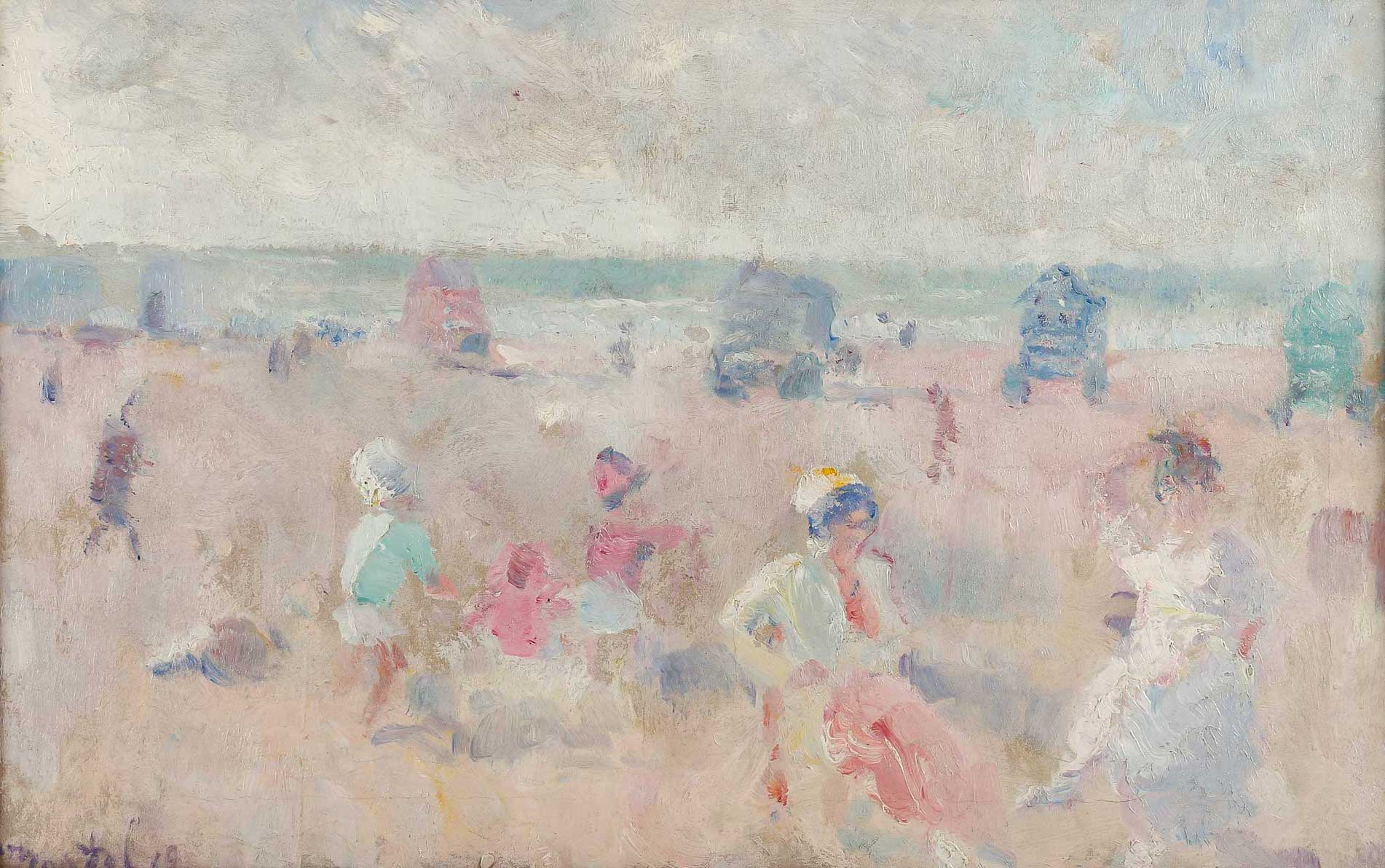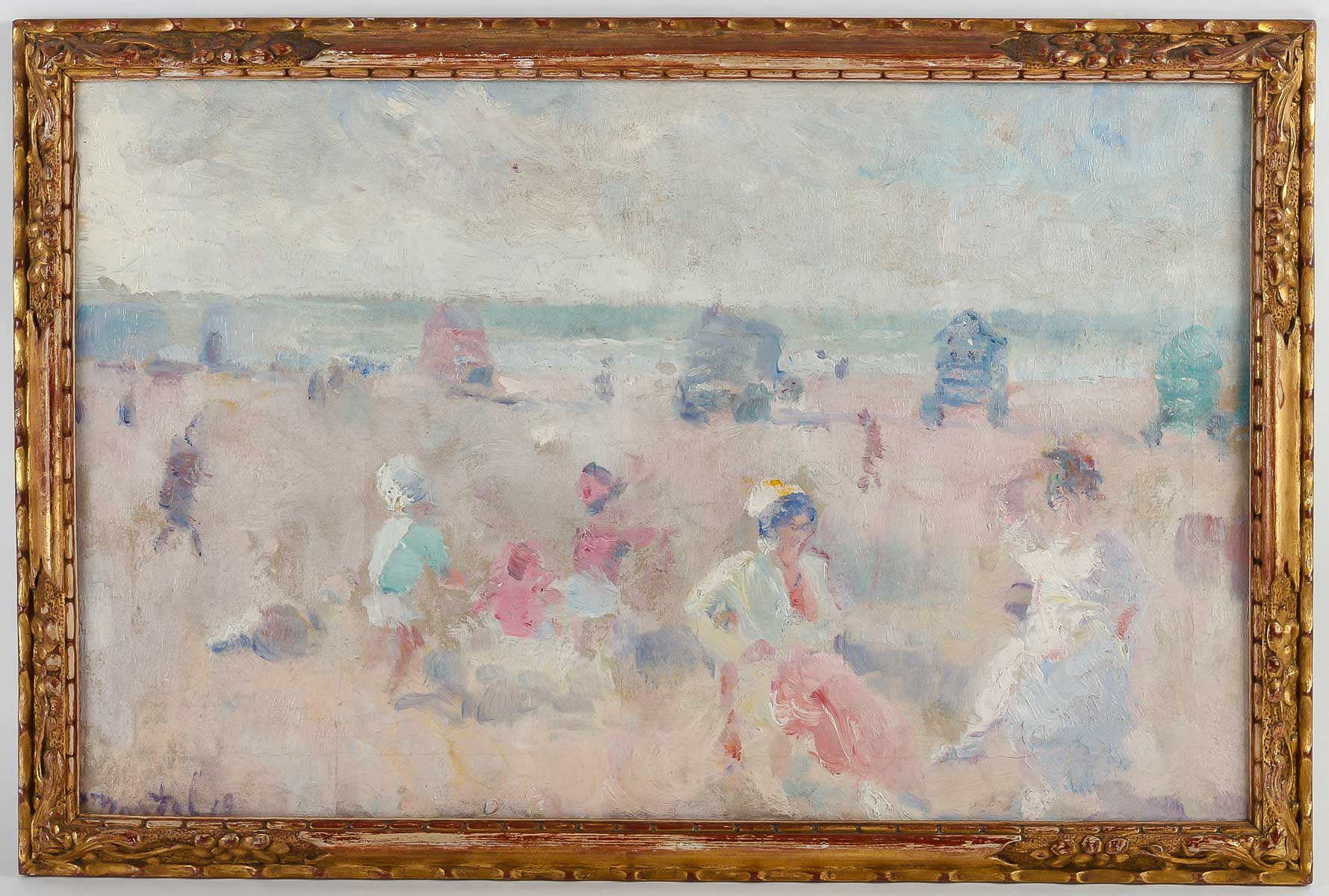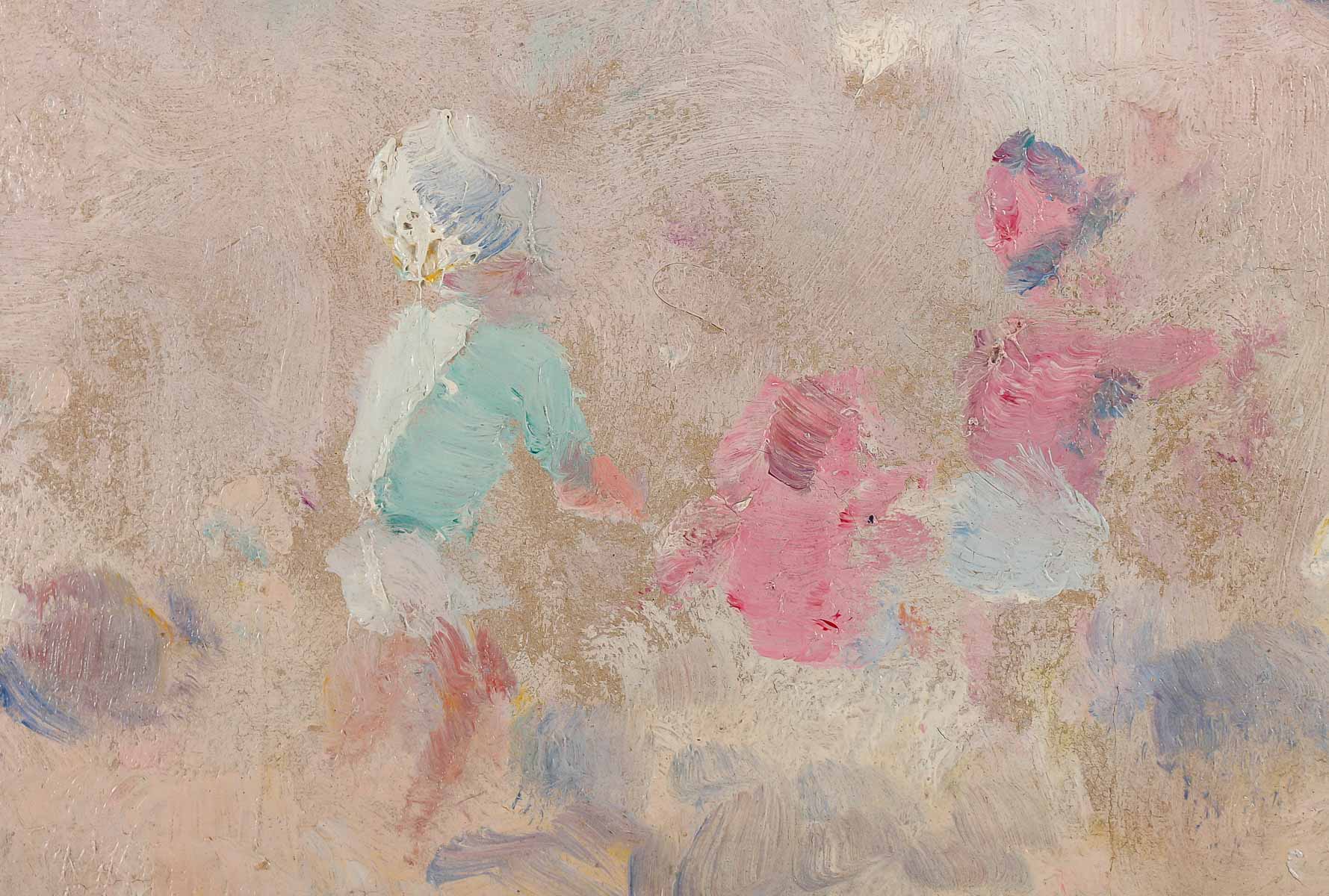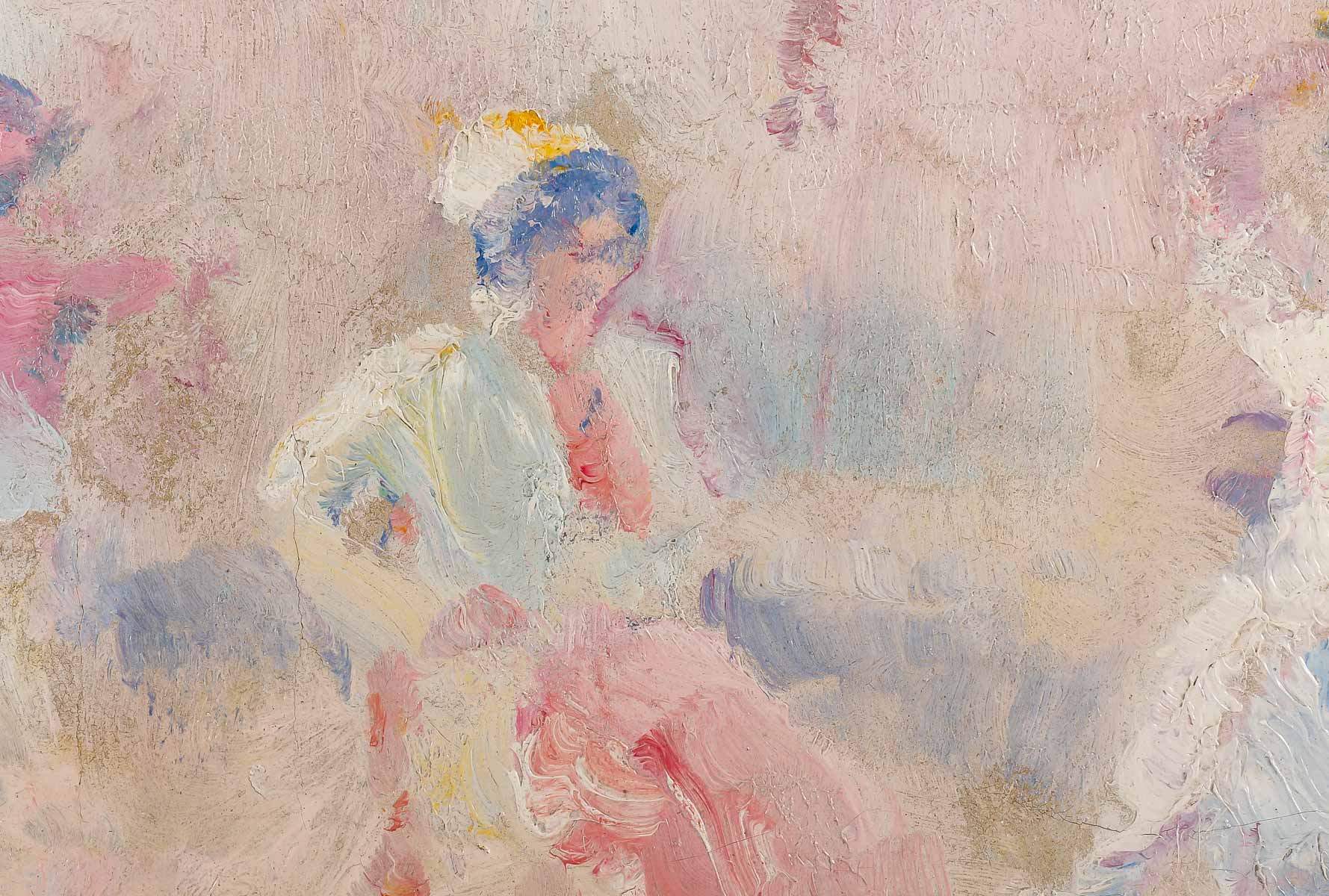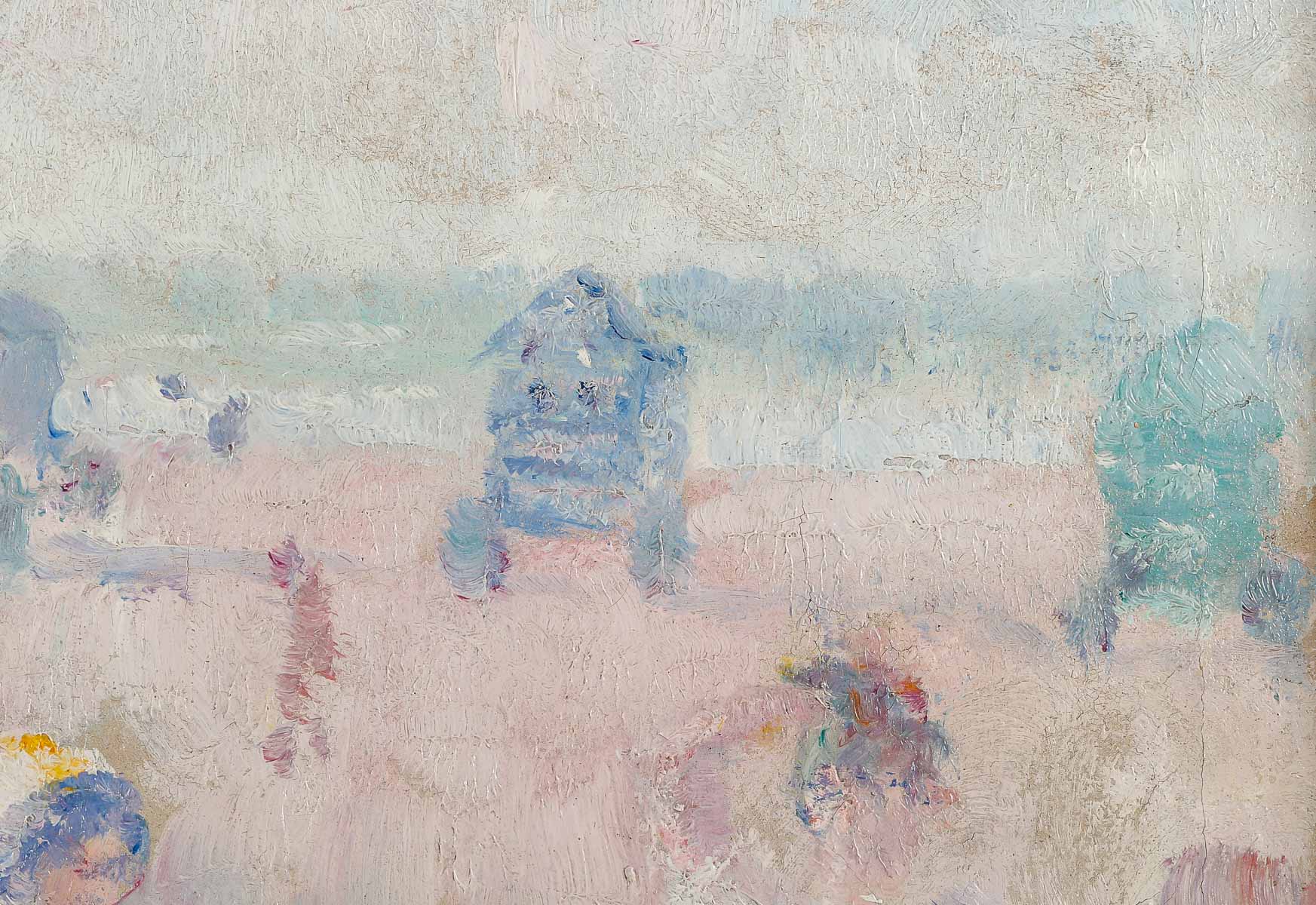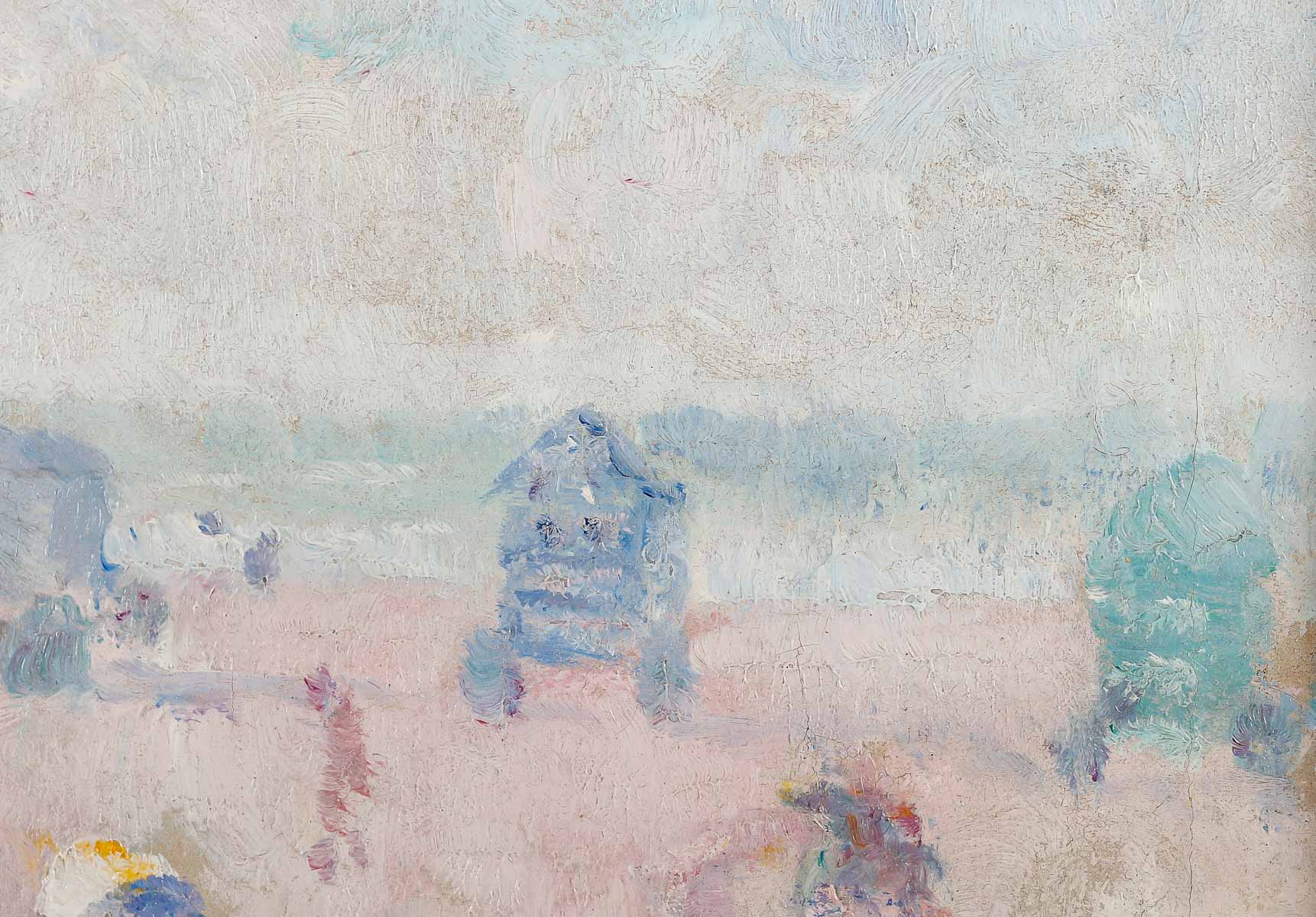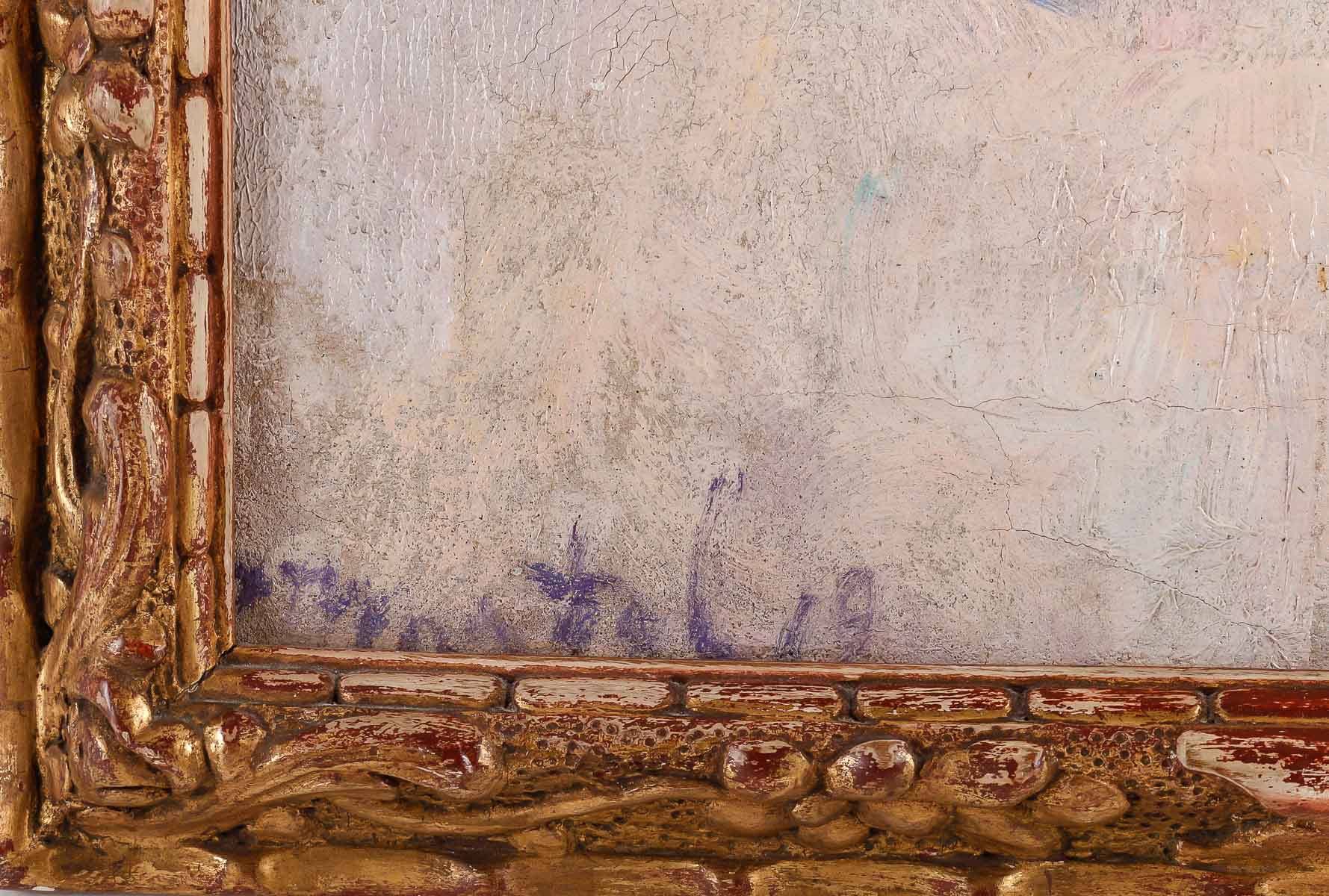Jean MARTEL (1879-1944)
A very charming beach scene, dated 1919, with a lively touch and pastel colors.
Oil on canvas
Signed and dated lower left
Dimensions: 38 x 60 cm
With frame: 43 x 65.5 cm
sold
Paul, Jean Martel, a painter bridging the gap between European and American Impressionism
Belgian-American post-Impressionist Paul Jean Martel was considered the missing link between European and American Impressionism.
A very charming beach scene
Women and children are suggested by a light touch in a harmony of pastel colors. Bathed in summer light, beach, sea and sky merge into one
Near the sea, you can see the bathing trailers where bathers used to change. This type of wheel-mounted bathing cubicle was used mainly in the late 19th century and up to the 1910s. It made it possible to change clothes and go straight from the beach to the ocean without departing from Victorian morality.
Biography
Born in Belgium in 1879, his parents immigrated to America in 1889 and settled in Philadelphia, Pennsylvania. Paul then returned to Belgium and continued his artistic training at the Royal Academy of Brussels, where he exhibited alongside the best Belgian artists of the time, including Theo van Rysselberghe, Henri Evenepoel and George Lemmen.
In 1920, he took part in the triennial exhibition in Antwerp with Henri Matisse, Pierre Bonnard and Auguste Oleffe. In 1921, he also exhibited with Verhaegen and Richard Heintz.
After graduating in 1906, Martel returned to Philadelphia to study with Thomas Anshutz at the Pennsylvania Academy, where he was impressed by the landscape painting of the Pennsylvania School, which included artists Edward Redfield, Daniel Garber, Robert Spencer and W. Elmer Schofield.
After his marriage in 1911, he returned to Europe, visiting and working in Paris, London and Brussels.
When the First World War broke out, Martel moved to Auderghem, a small village just outside Brussels. During his stay, he exhibited with the Cercle Artistique d’Auderghem, at the triennial exhibitions in Antwerp and Ghent, and took part in exhibitions in Brussels.
The artist returned to Philadelphia in 1923, and in the late 1920s, 1930s and 1940s, he exhibited in Philadelphia, New York, Chicago and Lynchburg, Virginia.
Source
http://www.pauljeanmartel.com

